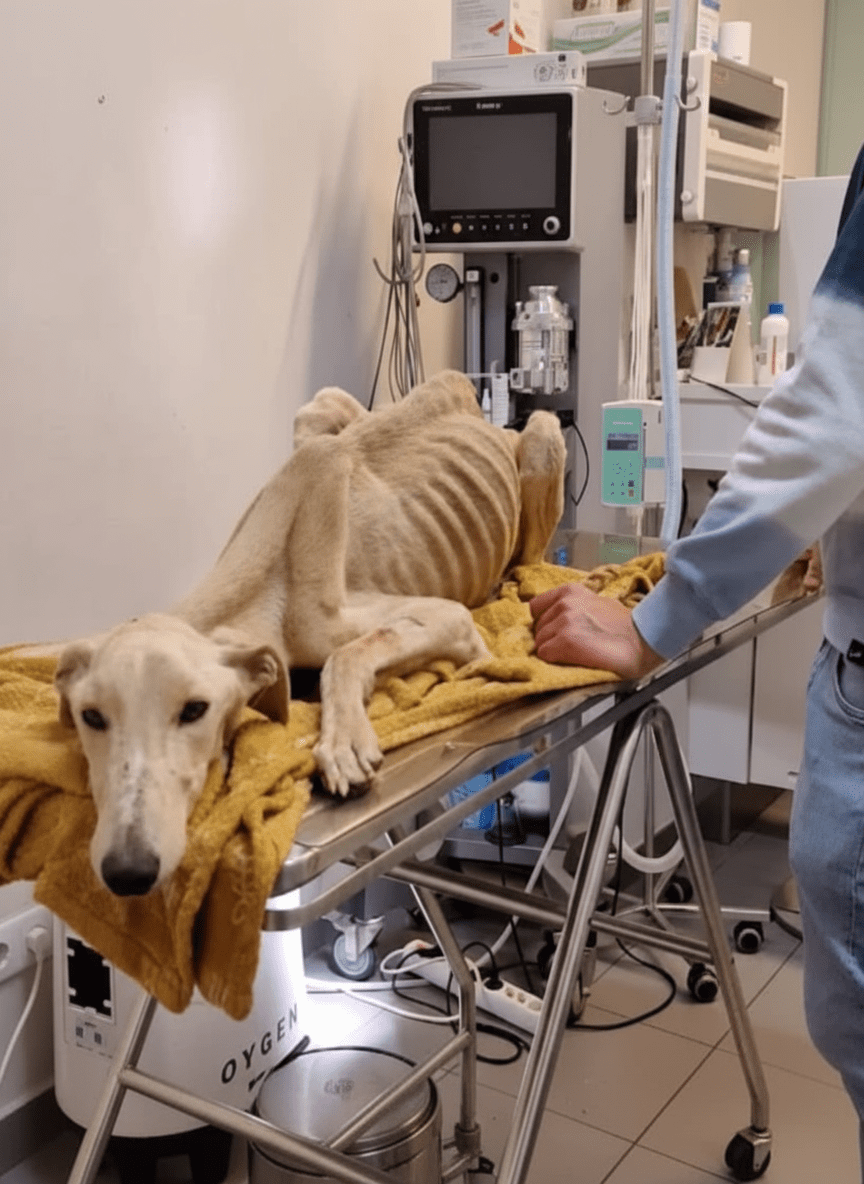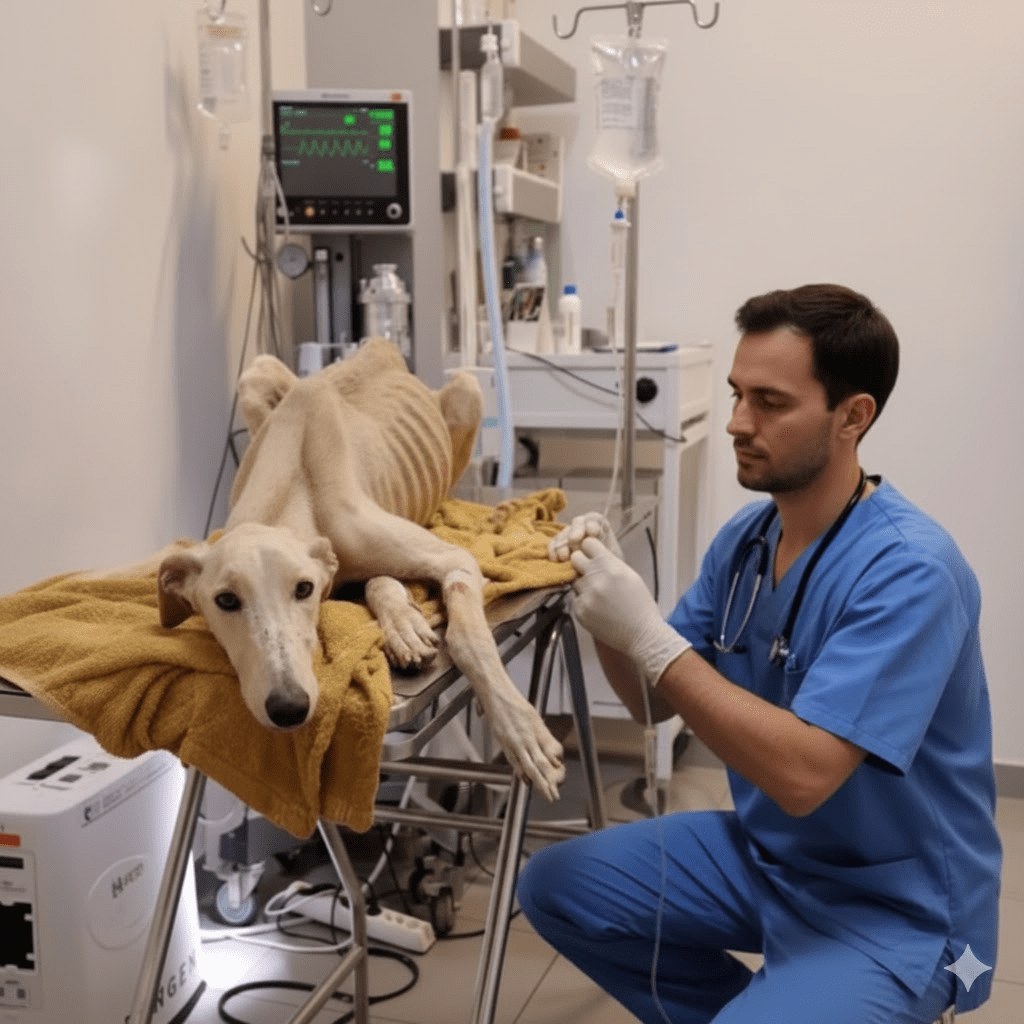The haunting image of a severely emaciated dog lying on a veterinarian’s examination table is a stark and painful reminder of the profound suffering that neglect can inflict. With every rib tragically visible, and a gaze that seems to hold the weight of immense pain and abandonment, this greyhound, or a similar sighthound breed, embodies the silent agony of countless animals. The sterile, clinical setting underscores the seriousness of her condition, suggesting an urgent battle for survival. Her fragile body, draped over a yellow towel, speaks volumes about the extent of her deprivation, hinting at a prolonged period of starvation and perhaps other forms of mistreatment. This isn’t just a picture; it’s a call to action, a visual testament to the critical need for compassion, intervention, and dedicated care when animals are failed by humanity. It’s a scene that immediately stirs empathy, prompting us to look beyond the immediate visual and delve into the story of resilience, and the possibility of hope, that lies beneath such a harrowing beginning.

Such severe emaciation, as seen in the initial image, is rarely an overnight occurrence. It typically points to a history of prolonged neglect, where access to adequate food and clean water has been severely restricted. Beyond the lack of sustenance, animals in such conditions often suffer from a host of other issues, including dehydration, hypothermia, muscle atrophy, and a compromised immune system. The visible bone structure suggests that the dog’s body has already depleted its fat reserves and has begun to break down muscle tissue for energy, a critical stage of starvation. This level of physical degradation requires immediate and careful medical intervention, as simply providing large quantities of food too quickly can be dangerous and even fatal, a condition known as refeeding syndrome.

The immediate priority for veterinarians treating such a case is stabilization. This involves slowly reintroducing nutrients, often through specialized diets and controlled portions, along with intravenous fluids to combat dehydration and electrolyte imbalances. Pain management is also crucial, as these animals often suffer from bedsores, injuries, or underlying medical conditions exacerbated by their weakened state. The veterinary team must meticulously monitor vital signs, blood work, and the dog’s overall response to treatment, adjusting care as needed. This initial phase is critical and can determine the success of the long-term recovery, demanding both expertise and immense dedication from the caregivers.

Beyond the physical ailments, animals rescued from severe neglect often carry deep emotional scars. Fear, anxiety, and a profound lack of trust in humans are common psychological responses to prolonged abuse or abandonment. Rehabilitation must therefore extend beyond medical treatment to include behavioral therapy and patient, consistent socialization. Creating a safe, predictable, and loving environment is paramount to helping these animals overcome their past traumas and learn to trust again. This process can be lengthy and challenging, requiring significant patience, empathy, and understanding from foster parents and animal behaviorists.

Over time, with proper nutrition, consistent medical care, and a supportive environment, the physical transformation can be remarkable. The hollowed-out frame begins to fill out, muscle mass returns, and the coat regains its luster. The eyes, once dulled by despair, start to reflect a spark of life and curiosity. This visual change is often accompanied by a shift in demeanor, as the dog gradually sheds its fear and begins to exhibit typical canine behaviors – wagging its tail, playing, and seeking affection. Each pound gained and every playful bark is a testament to the power of resilience and dedicated care.


While the journey to full recovery can be long and arduous, the ultimate goal is to find a loving, permanent home for these resilient animals. Adoption is not just about providing a roof over their head; it’s about offering a second chance at life, a secure environment where they can continue to heal, thrive, and experience the unconditional love they so deeply deserve. Organizations dedicated to animal rescue and rehabilitation play an indispensable role in making these transformations possible, relying heavily on the generosity of donors, volunteers, and foster families.







